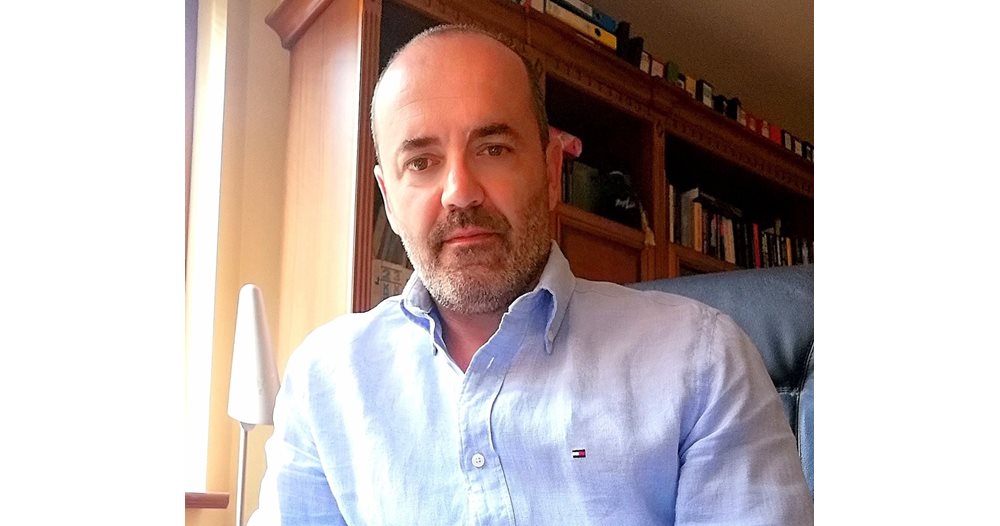- Saves 30% of the electricity bills of an average enterprise
- Payable over 5 years, together with the loan
- Banks are flexible because the investment is secure
Petar Pandezov is a consultant installer of photovoltaic plants. He worked for a company that built the first megawatt plant in the Balkans 14 years ago. He owns the company PANPOWER, which builds solar plants. He had the opportunity to see and participate in all stages of development of the photovoltaic industry in Bulgaria.
– Mr. Pandezov, high electricity prices have made investments in renewable plants relevant. According to the Electricity System Operator, the applications for connection to the grid are for 18,000 megawatts of solar power. Is this realistic?
– Applications submitted already exceed 20,000 megawatts. This is an absolutely real number. Not all will be realized immediately, but in 3 to 5 years they will probably be built. Compared to the boom of 2009-2012, it is now between 4 and 9 times cheaper to build a solar installation.
Photovoltaic technology is affordable and familiar, while units were familiar years ago.
– Is this new boom explained only by electricity prices?
– They are the reason for building self-consumption systems, which are widely used by small and medium-sized businesses. In 2012, such projects were minimal, with most investments directed at large megawatt plants with subsidized electricity. Currently, an investment in photovoltaics for own consumption, with a normally executed system, pays for itself in 3 to 5 years, depending on the financing. The energy produced by the system is protected from external factors that affect the prices of other energy carriers. This is the cheapest electricity produced and consumed directly on site, its price does not change.
– What share of the electricity bill does a photovoltaic roof save?
– We have built many photovoltaic plants. During these years we have gained experience, at the moment we also have many customers who are satisfied, because such a plant in the mass case saves about 30% of the bills. In the case of energy-intensive productions, serious solar capacities must be built in order to achieve full coverage of the consumed energy. Small and medium-sized businesses build between 100 and 500 kilowatts, and these are enough to reduce bills by 30%.
– Do you have data on photovoltaic capacities built for own needs?
– There’s a lot under construction right now and I haven’t checked the updated stats. In general, the owner of such a plant is satisfied because, if it is built correctly and with quality materials, he has almost no costs to maintain it, it does not take up space, and when he sees the effect, if there is additional space, he expands it.
– What sources of financing can a company that wants to build a solar plant to use the electricity for its own needs find?
– The easiest option is to get credit from commercial banks. As an example, I can point to UniCredit Bulbank, which offers a special product – investment loan for the construction of a photovoltaic plant. It is suitable for enterprises or businesses looking to optimize their electricity costs.
Banks are very flexible because the investment is not risky, it is predictable. The customer pays his installment from the reduced electricity bills. A simple calculation that we do for our customers shows that with the use of bank financing it takes about 5 years to repay the loan and then within 20 years a profit is made.
– What is the life of a photovoltaic?
– The life of the panels, according to the guarantees given by the manufacturers, is 25 years, but they can continue to work for 40 years. The first megawatt plant in the Balkans (1 megawatt) was built in Bulgaria, it is 14 years old and works with its design capacity.
– What programs are envisaged to promote investments?
– Banks are very flexible, they support the client in the analysis and evaluation of the project. The other promotion measures are in the recovery plan, it is aimed at stimulating investments in RES. It aims to finance large battery projects, but also targets small household roofing projects.
– How long does it take to pay off a megawatt of installed capacity if bank financing is used?
– 1 megawatt costs an average of 600,000 euros, its production is limited on an annual basis to about 1400 solar hours. In such calculations, a plus bank credit paid off in 5-6 years. If the price of electricity on the free market falls and stabilizes at around BGN 200 per megawatt hour, which is my expectation, then 1 megawatt with bank financing will pay for itself in 7-8 years.
– According to your forecasts, it turns out that now is the time for investments in solar?
– Yes, now is the time. The other factor is that we have all the components here, which is also a plus and the projects are prepared faster. A lot of free capital has gone into this industry because of the high demand. If in 2012-2013 there were about 30 companies that were involved in photovoltaics, now I am sure there are over 500. It is a sector that gives work to traders, importers, designers, installers, there is even a shortage of good frames.
– What advice would you give to an entrepreneur who wants to help himself with electricity costs and is becoming interested in investing in photovoltaics?
– The investment in photovoltaics I define it as investing in a small oil well. Whatever is happening globally and locally, when you have even a small photovoltaic system, you are producing energy. This can in no way lead to a loss, there are only pluses – whether for your own business, whether for household independence, whether for trade. The independence that this headquarters gives them and the ability for the business to forecast its costs and be competitive are arguments enough. The use of green energy for production creates an additional positive image. In Europe, products produced with green energy are frowned upon.
As a designer and installer of solar plants, I believe that the sustainable solution for business is the so-called long-term contracts for the supply of green energy at a fixed price. Large installed megawatt capacities can supply quite a few companies at good prices.
– Are there households that also want photovoltaics on the roofs of the block or house?
– In households, the use of photovoltaic panels should be widespread, as is the widespread use of hot water collectors. The problem is that the bit needs electricity mainly in the dark part of the day. The profile of production diverges from that of consumption. An option is to install batteries and use the energy from them in the evening, but this becomes more expensive. If there is a battery, it should be small and for powering critical consumers – such as SOT, cameras, lighting, nothing more.
The option that the state can support is to ease the procedure for building a system on the roof and to sign a contract for own consumption and sale of excess energy. In this situation, if there is consumption during the day, it is powered by the photovoltaic. When there is no consumption, the system sells and generates revenue, which could cover 50% of the electricity bills.
– What obstacles do you see in investments in renewable plants?
– Currently, the preferential electricity prices of renewable sources are not attractive. Administrative procedures are also a problem – with the issuance of the construction permit in the municipality. Electricity distribution companies strictly observe the deadlines for opinions, consult properly.
The problems are in the property ownership documentation of the investors themselves – inconsistencies in the sketches, unsettled things in the property. Perhaps the state should ease the procedures for the small investor, not have such serious requirements for the installation permit. The requirement for one photovoltaic of 10 panels is as much as for a large plant.
Expect an entrepreneur’s story about why he built a photovoltaic plant in his company.
The material was prepared with the support of Unicredit Bulbank.
–


